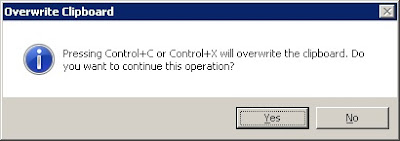Accessible Tables: Automatic Title Reading with JAWS
An ever present in my workplace is making sure that everyone is doing their bit to make information more accessible. It always amazes me just how much this base theme - that not everyone does things the same way you do - feels like such a game changer in the office. But that’s the platform right there, get that in place as a baseline and the world of accessibility and usability begins to feel like a freedom and not a penalty.
When it comes to accessible documents, specifically accessible Word documents, there are some things to be mindful of – in fact, I posted a table of some of these elements in an earlier post – but there’s also a few extra bits on top of these broader elements which could be seen as going that extra mile.
In this post I’m going to walk through one of these digital garnishes, one of those additional techniques that you can embed in your existing best practice without too much extra effort.
Automatic Table Titles in MS Word
When a JAWS user encounters a table in a document, the screenreader indicates the table object and will allow the use of a bunch of hotkeys specifically for use in tables. Many users though simply ARROW KEY or TAB KEY their way through tables, gradually building up a picture of the content. To aid this navigation and understanding of the content, you can use a little known trick to automatically read out the column and/or row titles. Let’s go through how this works.
- Open an existing Word document that contains several tables or create a new test document with a couple of tables in it. (I’ve created a test document for this purpose, with a heading and a couple of small uniform data tables.)
- Navigate to the first table and locate the titles – if you have any of course! Assuming that you do, depending on the type of data you are displaying, you need to think about the type of titles you require and where you need to place your edit cursor to get this right. So:
- If you only have column titles, focus the cursor in the row that contains the column titles.
- If you only have row titles, focus the cursor in the column that contains the row title.
- If you have both row and column titles, focus the cursor in the specific cell where the column title row and the row title column intersect. In a typical table, this can often be the very first cell.
- Use DOWN ARROW to move to the lower ribbon for the Insert tab then use the TAB key to move along to the Bookmark button. Activate the Bookmark feature with the SPACEBAR.
- With focus in the Bookmark dialog box, specifically the "Bookmark Name edit combo box" (ALT B), type in the bookmark text that is appropriate for the type of titles you have in your table. So:
- For column titles only, type ColumnTitle. (Capital C Capital T, no space in between)
- For row titles only, type RowTitle. (Capital R Capital T, no space in between)
- For both row and column titles, type Title. (Capital T)
- When you have typed in your bookmark text, use ALT A to activate the Add button. The bookmark will be confirmed and the dialog box will close.
- With focus back in the document, navigate through the table – notice that JAWS is now speaking the titles automatically when you move to the next column or row.
The benefit of this bookmarking scheme is that, when you save your document you also save the accessibility – this gives any JAWS user a head start with their table reading. So, it is worth remembering popping these bookmarks in when you need to.
More Than One Table in the Document?
But what if you have more than one table in your document? In this case you need to ensure that you provide unique bookmark names. Bear in mind that your JAWS bookmarks must always begin with the text outlined above to which you can add an underline (bookmarks do not contain spaces) and then add more text. You can create bookmarking schemes as necessary, take the following examples:
- RowTitle_Number_One
- ColumnTitle_Sales_Figures_10
- RowTitle_First_Table
- ColumnTitle_Page1_table
In each case make sure you use the appropriate text for your row and column titles, add an underline, then type another word in. Alternatively, you can add another couple of words, each separated with an underline. Try not to make the bookmarks too unwieldy though - keep things as straightforward as possible.
Pretty neat trick this one. And now that you know all about it, your job is to pass the information on to other users of MS Word so they can add it to their best practice information. Have fun!







